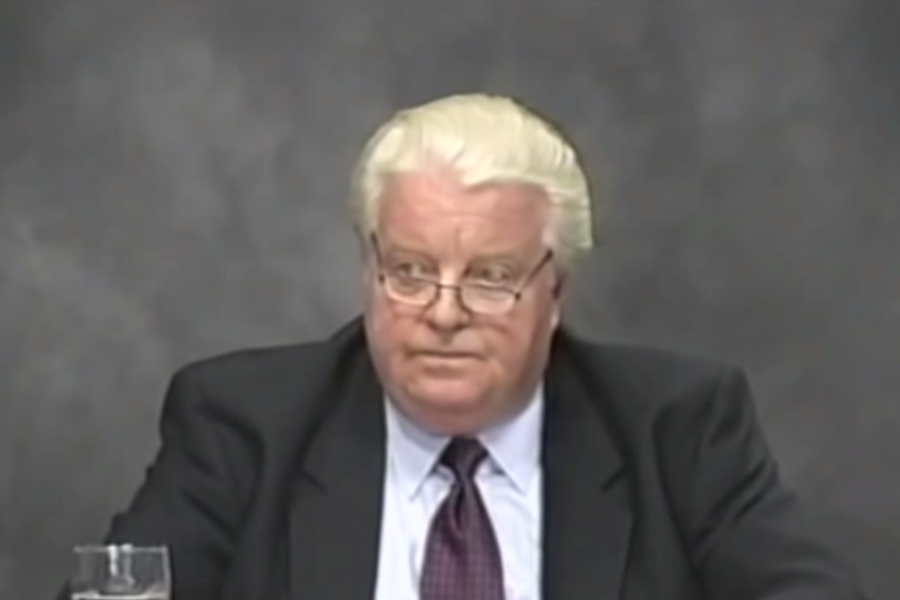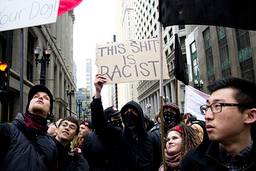Death of a Torturer: Jon Burge Is Gone But His Racist Policing Is Not Forgotten
Jon Burge, the Chicago police commander who tortured over one hundred black men, died yesterday. He acted with complete impunity over almost two decades before reporters, activists, and human rights attorneys stopped him.
Ramsin Canon

You can’t slander a dead man, but in any case, Jon Burge is a man beyond slander. The former Chicago Police Department commander and torturer died this week in Florida.
In 2010, Burge was convicted and sentenced to four and a half years in prison. Incomprehensibly — or perhaps not — Burge was not convicted for the abuse and torture of over one hundred black suspects throughout his reign over Area 2 on Chicago’s South Side between 1972 and 1988. He was convicted for lying under oath during the course of a federal investigation spurred by civil lawsuits brought by his victims — one of whom, Darrell Cannon, wrongfully convicted (and later exonerated) of murder on the strength of a coerced confession, described Burge’s team of interrogators as a “New Wave Klan.”
It is tempting to treat Burge’s death as a moment to employ metaphor, but just as he’s beyond slander, he defies metaphor. From his Area 2 dungeon, Burge employed torture tactics likely learned in Vietnam to brutally and, according to some of his victims, gleefully coerce confessions from black men to get them convicted of crimes they often hadn’t committed and keep them in cages for the rest of their lives.
Jon Burge and his “Midnight Crew” of officers would nab people off the street, savagely beat them, in some cases electroshock them, apply cattle prods to their rectums and genitals, and sometimes even force them to play faux games of Russian roulette. This went on for almost twenty years, unimpeded. People served time on death row for crimes they didn’t commit. The system that housed Burge did not have a process in place, or even any incentive, to prevent this from happening.
As a young man, Burge fought in Vietnam and that’s likely where he learned the techniques — and just as importantly, the indifference to humanity — necessary to torture and brutalize human beings. Burge carried those lessons back to the streets of the South Side and for a generation sent innocent men to prison.
The Chicago Fraternal Order of Police spokesperson used the occasion of Burge’s death yesterday to say Burge had put a lot of “bad guys in prison.” But there is no question that a sworn officer willing to snatch human beings off the street and torture them into prison cells didn’t make Chicago a safer place.
It wasn’t any formal city institution but the tireless work of activists against police abuse, a dogged local reporter, a team of attorneys, and most importantly the victims themselves, over the course of decades, that brought the crimes of Burge and his Midnight Crew to light. There was no institution to bring Burge to justice or keep him at heel as an initial matter. And why would there have been? Burge and his command were good at their jobs: “solving” crimes by supplying a steady stream of convictions to prosecutors.
One of those prosecutors was State’s Attorney and future Mayor Richard M. Daley, who was informed in 1982 of the torture of Andrew Wilson. Daley declined to investigate. One of his successors, Richard Devine, also declined to undertake a comprehensive investigation.
In the 1970s, just as Burge was getting his start at CPD, “law and order” was the refrain of the day in US cities. The Civil Rights Movement and increasing black and Latinx political power in big cities were treated as lawlessness and social decay. With the Civil Rights and Fair Housing Acts undercutting the practices that had maintained segregation for generations, police and prosecutors had de facto responsibility for maintaining the status quo. Cops unafraid to bend the law to get “the bad guys” became heroes: this was the era of Clint Eastwood as Dirty Harry asking a prone suspect if he felt lucky.
But Dirty Harry was a “renegade” cop at odds with his pencil-pushing superiors. Burge and his Midnight Crew may have been breaking the law and violating the constitution, but it was only the permissiveness of the department that could allow it to happen. As John Conroy, the Chicago Reader reporter who brought Burge’s crimes to popular public awareness, put it, Burge was only possible because no superior ever intervened.
Burge was no vigilante; there was no by-the-book Chief breathing down his neck and hollering at him to straighten up and fly right. For the Midnight Crew to operate so viciously for so long, the halls of the Area 2 headquarters at 91st and Cottage Grove had to stay silent, save for the howls of his victims. A system designed to terrorize a population into obedience as much as solve crimes was working properly.
It took Black People Against Police Torture (BPAPT), in coalition with scores of activists, survivors, and exonerees, who convened a coalition of activists and attorneys to bring international attention to the cases and spur restorative action. In 2013, the City Council approved a $12.3 million settlement for two of Burge’s victims. All told, the city spent approximately $100 million in legal defense and settlements connected to Burge’s torture regime.
Settlement payouts could never be enough. A coalition of organizations including BPAPT, Project NIA, BYP100, and others worked for nearly three years to get a reparations ordinance passed through the City Council. The ordinance was passed a month after Rahm Emanuel narrowly won his reelection bid — at a time, we know now, when the city was actively suppressing release of a video showing the killing of sixteen-year-old Laquan McDonald by a Chicago police officer. That trial was made possible by many of the same activists and began just a day before Burge’s death.
The reparations ordinance admitted fault on the part of the city, created a fund and provided counseling for torture survivors, funded construction of a permanent memorial, and perhaps most importantly, required that the history of the Burge torture regime be taught to Chicago’s eighth and tenth grade students.
Jon Burge’s legacy defies slander, because the truth is enough. A little justice is that young Chicagoans will hear the truth and escape the conspiracy of silence that reigned around Burge’s torture for too long.
This story first appeared at Jacobin.






